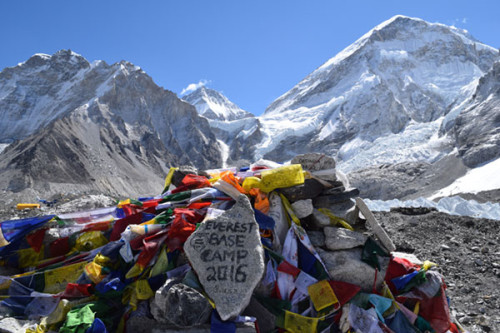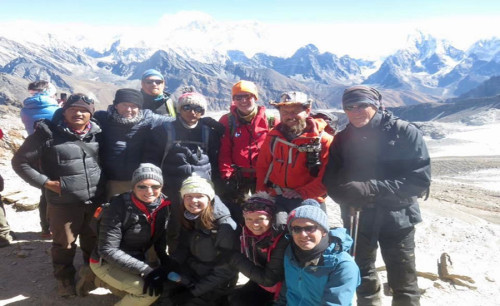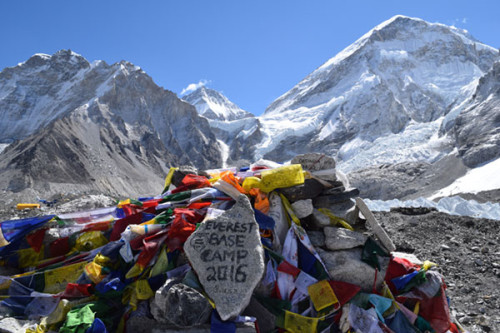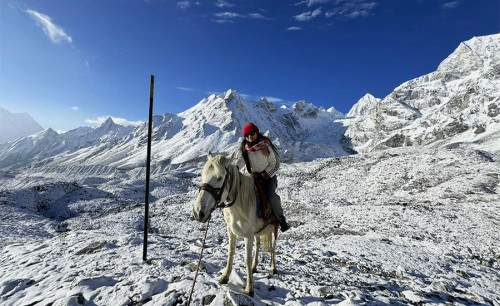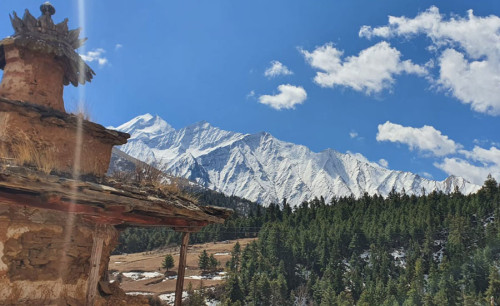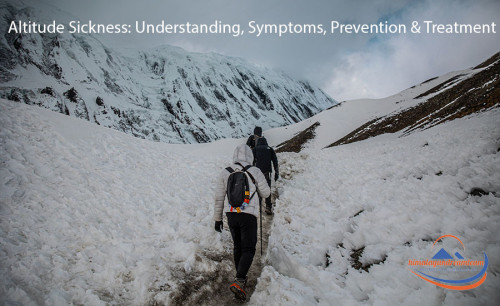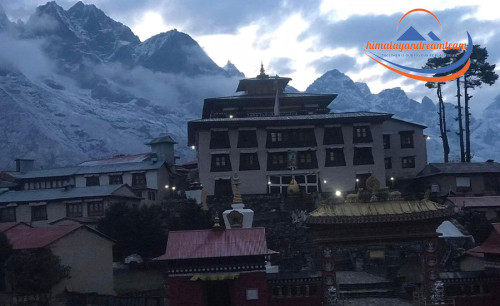Manaslu Circuit Trek Difficulty: A Comprehensive Guide
Published On : 19th May, 2024 By Himalayan Dream Team

Manaslu Circuit Trek Difficulty: A Comprehensive Guide
The Manaslu Circuit Trek is an incredible journey through the heart of the Nepalese Himalayas, offering trekkers a mix of adventure, stunning scenery, and cultural experiences. However, the trek is known for its challenging aspects. In this guide, we will delve into the various factors that contribute to the Manaslu Circuit Trek difficulty, providing you with all the information you need to prepare adequately.
Trekking Challenges Manaslu Circuit
The Manaslu Circuit Trek is considered one of the more challenging treks in Nepal. Trekkers face a variety of challenges that test their physical and mental endurance. These challenges include high altitude, steep ascents, rough terrain, and unpredictable weather conditions. Each of these factors requires careful consideration and preparation to ensure a successful and safe trekking experience.
One of the major challenges is the remoteness of the trek. Unlike the more popular trekking routes in Nepal, the Manaslu Circuit is less frequented, meaning fewer amenities and support facilities along the way. Trekkers must be self-sufficient, carrying essential supplies and being prepared for emergency situations. The isolation also means that trekkers need to be more cautious and well-prepared to handle any issues that may arise during the trek.
Manaslu Trek Elevation Gain
One of the most significant challenges of the Manaslu Circuit Trek is the elevation gain. The trek starts at an altitude of around 700 meters in Soti Khola and ascends to 5,135 meters at the Larkya La Pass. This rapid elevation gain requires trekkers to be cautious and well-prepared for the effects of high altitude. The significant altitude variation over a relatively short distance can be taxing on the body.
Managing the elevation gain involves careful planning and pacing. Trekkers should be aware of the importance of gradual ascent to allow their bodies to acclimate to the decreasing oxygen levels. Proper acclimatization schedules, including rest days at higher altitudes, can help reduce the risk of altitude sickness and make the ascent more manageable. Training at higher altitudes before the trek can also be beneficial in preparing the body for the demands of the journey.
Altitude Sickness Manaslu Circuit
Altitude sickness is a major concern on the Manaslu Circuit Trek. As you ascend, the air becomes thinner, and the risk of altitude-related illnesses increases. Symptoms can range from headaches and nausea to more severe conditions like High Altitude Pulmonary Edema (HAPE) or High Altitude Cerebral Edema (HACE). Proper acclimatization and gradual ascent are crucial to mitigate these risks.
Preventing altitude sickness involves several strategies. Trekkers should stay hydrated, avoid alcohol and smoking, and take it slow, especially when gaining altitude quickly. Recognizing the early signs of altitude sickness and responding promptly by descending to lower altitudes can prevent serious complications. Consulting with a healthcare provider before the trek and carrying necessary medications can also be part of an effective prevention plan.
Manaslu Trek Physical Fitness
Physical fitness plays a crucial role in tackling the Manaslu Circuit Trek difficulty. Trekkers need to be in good physical condition, with strong legs and cardiovascular endurance. Training should include long hikes, stair climbing, and aerobic exercises to build stamina and strength. Being physically fit not only makes the trek more enjoyable but also reduces the risk of injuries.
A comprehensive fitness routine should start several months before the trek. Incorporating strength training exercises, particularly focusing on the lower body and core, can help build the muscle endurance needed for long days of trekking. Cardiovascular exercises like running, cycling, and swimming can improve overall stamina. Additionally, practicing yoga or stretching exercises can enhance flexibility and help prevent muscle strains.
Manaslu Trek Acclimatization
Acclimatization is essential for a successful trek. The itinerary should include rest days to help your body adjust to the altitude. This process helps reduce the risk of altitude sickness and ensures that you are physically prepared for the higher elevations of the trek. Effective acclimatization involves staying hydrated, eating a balanced diet, and getting plenty of rest.
Spending time at intermediate altitudes before the trek can also help with acclimatization. This might involve trekking in other high-altitude areas or spending time in mountainous regions. Listening to your body and not rushing the ascent is crucial. Acclimatization days not only help physically but also provide an opportunity to enjoy the local culture and scenery, making the trek more enriching.
Steep Ascents Manaslu Trek
The Manaslu Circuit Trek involves several steep ascents that can be physically demanding. Trekkers will encounter numerous uphill sections, especially as they approach higher altitudes. These steep ascents require good fitness and endurance. Proper pacing and using trekking poles can help manage the strain on the legs and knees.
Training for steep ascents should include exercises that mimic the conditions of the trek. This can involve hill walking, stair climbing, and using inclined treadmills. Strengthening the muscles around the knees and ankles can also help manage the physical demands of steep climbs. Trekkers should also practice carrying their trekking gear to get used to the additional weight and balance requirements.
Rough Terrain Manaslu Circuit
The terrain on the Manaslu Circuit Trek is rugged and varied. Trekkers will navigate rocky paths, loose gravel, and uneven surfaces. Good trekking boots and poles can help manage the rough terrain and prevent injuries. Navigating this terrain requires attention to detail and careful footing to avoid slips and falls.
Preparation for rough terrain involves training on similar surfaces. Hiking on trails with varied terrain can help build the necessary skills and confidence. Wearing well-fitted, broken-in trekking boots can prevent blisters and provide the necessary support. Trekkers should also be prepared for changes in weather that can affect the trail conditions, making the terrain even more challenging.
River Crossings Manaslu Trek
Several river crossings add to the complexity of the Manaslu Circuit Trek. These crossings can be tricky, especially during the monsoon season when water levels are high. Bridges are typically used, but trekkers must remain cautious and steady. Ensuring that you have waterproof gear and proper footwear is essential for safe river crossings.
Practicing river crossings before the trek can be beneficial. Trekkers should learn to assess the safety of a crossing, understand the use of ropes, and maintain balance on slippery surfaces. Using trekking poles can provide additional stability during crossings. Being prepared for wet conditions and knowing how to dry gear efficiently can also help maintain comfort and safety during the trek.
Manaslu Circuit Trail Conditions
The trail conditions on the Manaslu Circuit Trek can vary greatly depending on the season. In the pre-monsoon (spring) and post-monsoon (autumn) seasons, the trails are generally more stable. However, in the monsoon season, trails can be muddy and slippery, increasing the difficulty. Trekkers need to be prepared for changing trail conditions and adjust their gear and pace accordingly.
Monitoring weather forecasts and trail reports before and during the trek can provide valuable information about trail conditions. Choosing the right season to trek based on your skill level and preferences can also make a significant difference. Understanding that trail conditions can change rapidly due to weather and being flexible in your plans can enhance the trekking experience.
Weather Conditions Manaslu Trek
Weather conditions in the Himalayas can change rapidly. Trekkers should be prepared for a range of conditions, from sunny days to sudden snowstorms. Proper clothing and gear are essential to stay safe and comfortable. Layering clothing is a good strategy to manage varying temperatures and weather conditions.
Packing for diverse weather involves bringing moisture-wicking base layers, insulating mid-layers, and waterproof outer layers. Trekkers should also have gloves, hats, and sunglasses to protect against the elements. Understanding the local climate and being prepared for sudden changes can help prevent hypothermia, heat exhaustion, and other weather-related issues.
Remote Trekking Manaslu Circuit
The Manaslu Circuit Trek is a remote trek, far from modern amenities. This remoteness adds to the challenge, as access to medical facilities, communication, and rescue operations can be limited. Trekkers need to be self-sufficient and well-prepared, carrying necessary supplies and knowing basic first aid.
Traveling in remote areas requires careful planning. Trekkers should have a well-thought-out itinerary, emergency contacts, and a reliable communication device. Carrying a first aid kit, extra food, and a water purification system can be lifesaving. Understanding the limitations of being in a remote area and being prepared to handle emergencies independently is crucial.
Manaslu Trek Preparation
Preparation is key to overcoming the challenges of the Manaslu Circuit Trek. This includes physical training, gathering necessary gear, obtaining permits, and planning your itinerary. Being well-prepared can significantly reduce the trek's difficulty. Researching the route, understanding the demands, and knowing what to expect can make the trek more enjoyable and less daunting.
Proper preparation also involves mental readiness. Trekkers should set realistic expectations and be prepared for the physical and mental demands of the trek. Joining trekking forums, reading guidebooks, and seeking advice from experienced trekkers can provide valuable insights and tips. Comprehensive preparation ensures that trekkers are ready to face the challenges and make the most of their adventure.
High Passes Manaslu Circuit
The highlight and one of the most challenging parts of the Manaslu Circuit Trek is crossing the Larkya La Pass at 5,135 meters. This high pass presents both technical and physical challenges, requiring careful acclimatization and a strong fitness level. The ascent to the pass is steep and can be covered in snow and ice, making it a formidable part of the trek.
Preparing for high passes involves specific training and equipment. Trekkers should practice walking on snow and ice, possibly with crampons and ice axes. Understanding how to use these tools effectively can be crucial for safety. Additionally, being mentally prepared for the high altitude and the physical exertion required can help trekkers successfully navigate this challenging part of the trek.
Manaslu Trek Endurance
Endurance is critical for the Manaslu Circuit Trek. The trek is long and demanding, typically taking around 14 to 18 days to complete. Trekkers must be prepared for long days of hiking, often in challenging conditions. Building endurance through consistent training and gradual increases in hiking distance and elevation is essential.
Endurance training should start well in advance of the trek. Long-distance hiking, combined with strength and cardio workouts, can build the stamina needed for the trek. Understanding your limits and pacing yourself during the trek can prevent burnout and injuries. Trekkers should also pay attention to nutrition and hydration to maintain energy levels throughout the journey.
Technical Difficulty Manaslu Circuit
While the Manaslu Circuit Trek does not require technical climbing skills, it does involve traversing glaciers, steep paths, and potentially snowy and icy conditions. Basic knowledge of using crampons and ice axes can be beneficial, especially during the winter season. Trekkers should be prepared for these technical aspects to ensure a safe and enjoyable trek.
Gaining experience in similar conditions before the trek can be advantageous. Trekkers can participate in guided winter hikes or mountaineering courses to develop the necessary skills. Understanding how to navigate and handle technical terrain confidently can make a significant difference in the trek's overall difficulty and safety.
Manaslu Trek Logistics
Logistics play an important role in the success of the trek. This includes arranging transportation to and from the trailhead, booking accommodations, and organizing food and supplies. Working with a reputable trekking agency can help streamline these logistics, ensuring that trekkers have everything they need for a smooth and enjoyable journey.
Effective logistics planning also involves understanding the local infrastructure and potential challenges. Trekkers should be prepared for limited availability of certain amenities and plan accordingly. Carrying essential items, understanding local customs, and having a flexible itinerary can help manage logistical challenges and enhance the trekking experience.
Duration of Manaslu Circuit Trek
The typical duration of the Manaslu Circuit Trek is around 14 to 18 days, depending on the pace and acclimatization schedule. This extended period requires careful planning and preparation to ensure you can manage the physical and logistical demands. Understanding the trek's duration and planning for rest days and acclimatization can help prevent fatigue and altitude sickness.
Trekkers should also consider the additional time needed for travel to and from the starting and ending points of the trek. Building in buffer days for unexpected delays or rest can make the overall experience more relaxed and enjoyable. Planning the trek duration thoughtfully ensures that trekkers can complete the journey safely and comfortably.
Manaslu Trek Fitness Requirements
To tackle the Manaslu Circuit Trek, trekkers should focus on building their fitness levels. This includes cardiovascular training, strength training, and flexibility exercises. Regular long-distance hikes and carrying a loaded backpack during training can also help simulate trekking conditions. Meeting these fitness requirements is essential for a successful and enjoyable trek.
Creating a fitness plan that progressively increases in intensity and duration can help prepare the body for the demands of the trek. Consulting with a fitness trainer or joining a trekking club can provide additional support and motivation. Ensuring that you meet the fitness requirements before embarking on the trek can enhance your ability to handle the challenges and enjoy the breathtaking scenery of the Manaslu Circuit.
Conclusion
The Manaslu Circuit Trek is a challenging yet rewarding adventure that requires careful preparation and a good level of physical fitness. By understanding the various difficulties involved and adequately preparing for them, trekkers can successfully navigate this stunning trek and enjoy the breathtaking beauty of the Nepalese Himalayas. Whether it's dealing with high altitude, rough terrain, or unpredictable weather, being well-prepared can make all the difference in having a safe and memorable trekking experience. Through comprehensive preparation and understanding the challenges, trekkers can embark on this incredible journey with confidence and excitement.
Recent From Blog

10th Apr, 2024

30th Apr, 2024

16th Apr, 2024

23rd Apr, 2024

23rd Apr, 2024

25th Apr, 2024

26th Apr, 2024

26th Apr, 2024

27th Apr, 2024

27th Apr, 2024

29th Apr, 2024

29th Apr, 2024

29th Apr, 2024

2nd May, 2024

2nd May, 2024

6th May, 2024

6th May, 2024

12th May, 2024

12th May, 2024

12th May, 2024

13th May, 2024

12th May, 2024

13th May, 2024

13th May, 2024

12th May, 2024

13th May, 2024

12th May, 2024

12th May, 2024

12th May, 2024

12th May, 2024

12th May, 2024

12th May, 2024

12th May, 2024

13th May, 2024

13th May, 2024

14th May, 2024

14th May, 2024

14th May, 2024

14th May, 2024

15th May, 2024

14th May, 2024

14th May, 2024

16th May, 2024

19th May, 2024

19th May, 2024

20th May, 2024

24th May, 2024

28th May, 2024

28th May, 2024

29th May, 2024

29th May, 2024
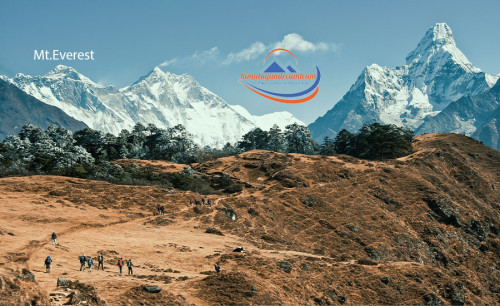
29th May, 2024

29th May, 2024

29th May, 2024


